
views
Caring for the Puppies
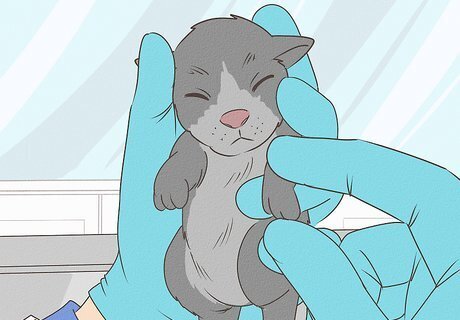
Take them to the vet. A vet should check the puppies within 48 hours of birth. The vet will examine them for cleft palates, birth defects, or other health issues. The vet may also be able to give you advice on how best to raise the orphaned puppies. Ask your vet if they recommend a certain puppy milk substitute or if they can teach you how to properly feed the puppies. Usually, the puppies would receive colostrum from their mother in the first 24-48 hours of birth. This important type of milk builds their immunity and gives them important nutrients. If they were unable to get colostrum from their mother, tell the vet. The vet may be able to provide them with blood plasma or serum from a healthy dog to have a similar effect.

Weigh them periodically. A puppy’s weight can tell you how often to feed them, how much to feed them, and how well they are developing. Normally, a puppy will double their birth weight in the first eight to ten days. To weigh puppies, use an electronic kitchen scale or a postal scale. Weigh them once a day for the first two weeks. After that, weigh them on a weekly basis. The puppy may lose a little weight in the first 24 hours, but if any weight loss occurs after that period, you may want to contact a vet. Keep a chart of each puppy’s weight so you can see whether they have gained or lost weight.
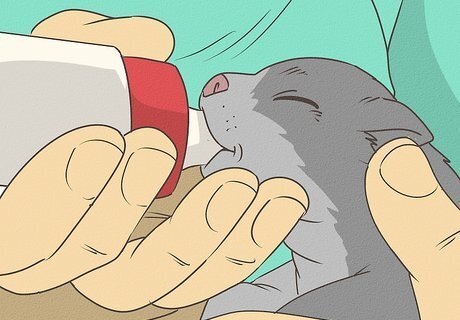
Supervise them. Puppies require constant care and supervision. Health problems can develop quickly and often require immediate supervision. Make a schedule for yourself so that you remember to feed and massage them at the proper times. You should also remind yourself to check their temperature often. Don’t be afraid to handle the puppies. Picking up and giving them a light massage is not only relaxing, but it helps you determine if they are too cold. It can also help socialize them. Raising puppies by hand is a full time job. You may want to ask other family members, friends, or volunteers to help you so that you can rest.
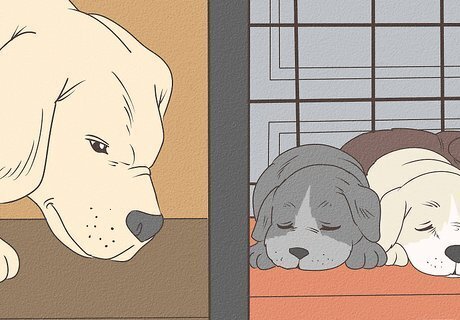
Isolate them from other animals. Puppies are extremely susceptible to viruses from other animals during this time, especially from other dogs. While it is treatable in adult dogs, canine herpesvirus can be fatal to puppies. Even if you don’t think your adult dogs are carrying any diseases, avoid introducing them to the puppies until they are five weeks old.
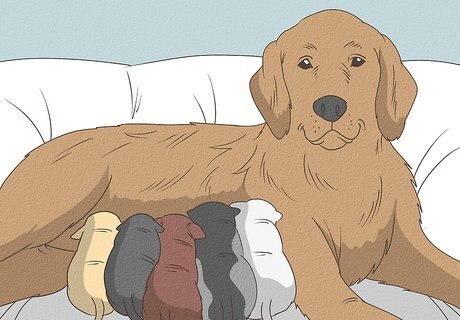
Find a foster mother. Raising a puppy by hand is extremely difficult, and it can cause socialization problems with the dogs later in the life. If you can, try to find a foster mother for your puppies. This would be a mother dog that has had puppies around the same time that these puppies were born. You can contact local breeders, vets, animal shelters, and rescue organizations to see if they know of a dog that might work. If you find a potential mother, you should slowly introduce her to the puppies to see if she accepts them. If she does, she may even let them nurse from her. If she is aggressive or dismissive towards the puppies, remove them from her.
Creating a Safe Environment
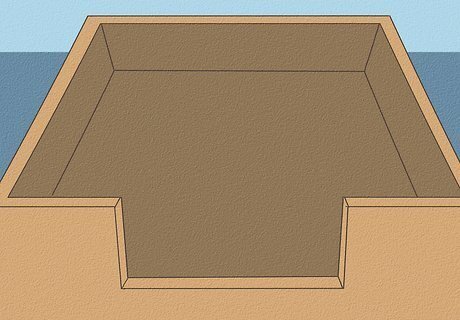
Provide a nesting box. A nesting box should be large enough for the puppies to turn around in with sides high enough that they do not fall or climb out. You can use a cardboard box, which is easy to replace if soiled, or you can build a wooden nesting box. If you bred the orphan puppies, you may already have a whelping box from when they were born. This can also double as their nesting box. Keep this box in a dry, secluded area. Do not place it in the way of air conditioning drafts or too close to cold windows. Some decide to build smaller, separate boxes for each puppy. The benefit of this is that it allows you to care for each puppy individually, and it helps make sure that you do not forget a puppy. That said, by keeping the puppies in one box together, it may be easier to keep them warm and to socialize them. Decide which system works best for you.
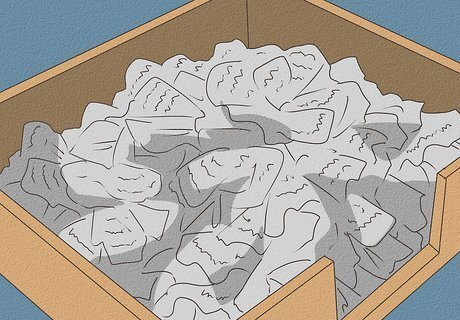
Line the box with newspaper. The puppies will not be housetrained, and they will soil the nesting box. Line it with newspapers so that you do not have to repeatedly clean the bottom of the box. You might also line it with a blanket that you can remove and wash. You will need to change the newspaper or blanket lining on a daily basis; you may need to change it more often if the puppies soil it. Make sure there are no loose threads or holes in the blanket, which could trap the puppy. Do not use more than one blanket, for the same reason.
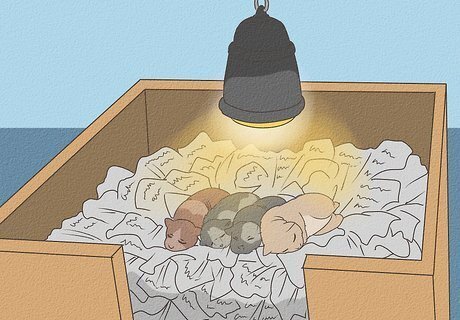
Warm the room. Newborn puppies cannot regulate their own temperature. You will need to keep the nesting box and room warm so that their temperature does not drop. Keep the room around 90 °F (32 °C) until the puppies are one week old. Lower it to 85 °F (29 °C) for the second week, then drop to around 75 °F (24 °C) after that. Instead of heating the entire room, hang a heat lamp over the nesting box. This will keep the puppies sufficiently warm. to prevent overheating, keep the heat restricted to one part of the nesting box, and make sure the puppy cannot touch the heat source directly. If the puppies are scattered around the box, it may be too warm. If they are huddled in a heap, it may be too cold.
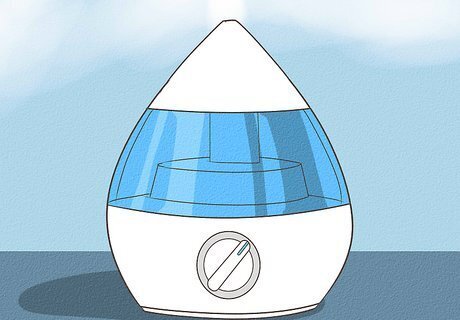
Humidify the room. To prevent dehydration, puppies will need an environmental room humidity of about 55-65% (more if they’re sickly or weak). You can place a humidifier in the room with the puppies to increase the humidity. You can also stick a damp towel in one side of the nesting box.
Feeding the Puppies
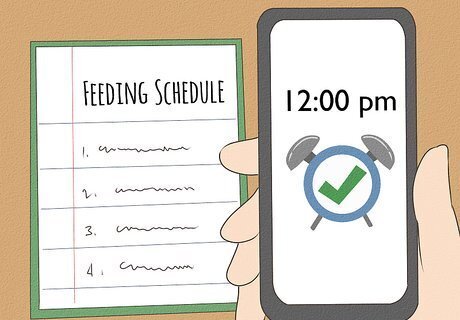
Create a feeding schedule. You will need to feed the puppies every three hours; if the puppies are weak or at a low weight, you may need to feed them every two hours. Write down a feeding schedule for yourself so that you do not forget. You may even want to set alarms on your phone to remind you. Puppies will often start to cry when they are ready to eat.

Decide between tube feeding and bottle feeding. There are two ways to feed puppies by hand: bottle feeding and tube feeding. Bottle feeding is easier, but it takes much more time. Tube feeding is recommended for weak puppies. It takes less time, but it must be done properly. Discuss with your vet the best options for your litter. Bottle feeding takes more time per puppy. That said, bottle feeding may be a much safer and easier alternative for those with no prior experience with puppies. Tube feeding is a faster method, and it is ideal for puppies with certain conditions, such as an inability to latch or a cleft palate. It delivers food directly to the puppy’s stomach via a syringe and tube. That said, if done improperly, it can cause respiratory problems. It is highly advised that you have a vet demonstrate how to tube feed before you try it yourself.

Fill the bottle or syringe with a puppy milk substitute. Puppies cannot live off of cow’s milk. They will need a solution that is nutritionally similar to their mother’s milk. You can buy commercial puppy milk substitute, such as Just Born, Nurturalle, or Ilsaac, at a pet store. Commercial varieties come in both canned “ready to feed” and powdered forms. Powdered milk substitute is cheaper, but you will have to mix it with warm water first. Before feeding, warm the food in the microwave for three or five seconds until it is warm, but not hot. Newborn puppies under 8 ounces (230 g) may have to be fed one cc of milk per ounce of weight while puppies above this weight can be fed one and a half ccs of food per ounce. Only prepare enough food for the day. Milk kept for longer than a day can attract bacteria. If you can't get a commercial product, make your own by mixing ten ounces of goat milk, one tablespoon light corn syrup, one cup of plain white whole milk yogurt, and one egg yolk. Only use this as a temporary food source until you can pick up a more nutritionally balanced, commercially prepared puppy formula.

Feed the puppy. When it is time to feed the puppies, take them out of the nesting box one at a time. Let them eat slowly. If you notice milk coming out of their nose or mouth, stop immediately. Wipe away the milk, and check that they are breathing normally before continuing. If they are wheezing or sneezing, they may have inhaled milk. Contact a vet in this case. If you are bottle feeding the puppies, set the puppy on your lap. Hold the bottle vertically, and let them suckle the milk. Do not squeeze the milk out; the puppy should naturally suck it out. The puppy will often stop eating when they are full. If you are tube feeding the puppy, you should attach a feeding tube to the syringe. Gently guide the tube to the back of the puppy's throat. Press down on the syringe slowly. It is highly recommended that you ask a vet to show you how to properly tube feed before you try it yourself.
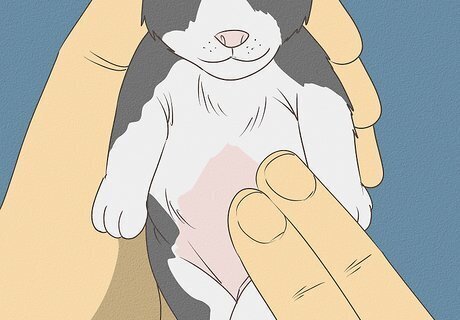
Burp each puppy. There is a chance air might have gone into the puppies' stomachs while they were feeding. This can cause stomach pain in puppies. To prevent this, burp the puppies after every feeding. There are two methods for burping puppies: You can place them on your hand and massage their belly until they burp. You can rest them against your shoulder and pat their back.
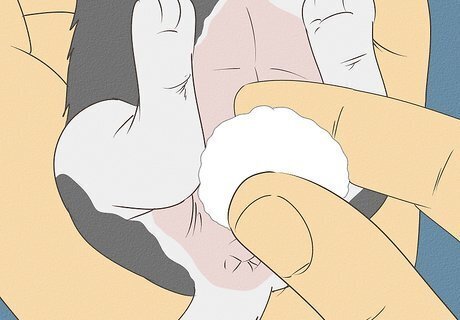
Massage the puppy so they can eliminate. Puppies cannot defecate or urinate on their own at first. You will need to help them eliminate by massaging them either before or after each feeding. You can use a warm, damp cottonball, tissue, or washcloth. Gently rub around their anus and genitals until they defecate and urinate. You may want to wear gloves and an apron as you do this, as the puppies’ waste can get on you and your clothing.

Wean the puppies. The puppies should begin to wean off milk at about three or four weeks of age. Mix or blend a little bit of puppy food with the puppy milk substitute. It should be soft and easy to swallow. Stick it in their mouth with your finger. They should naturally start to eat it. Slowly increase the amount of solid food that you give them. Your puppies should be eating solid food only by six weeks.
Monitoring the Puppies’ Health

Hold them to look for hypothermia. Because puppies cannot regulate their own body temperature, they may quickly lose heat and become cold. If you notice a puppy shivering or if their skin is cold to the touch, slowly warm them using your own body heat. Hold them close to you in your hands. The puppy will start to wiggle and move around when they are warm enough. Do not feed a cold puppy milk. Warm them slowly before feeding. Warming a puppy too quickly can send them into shock.
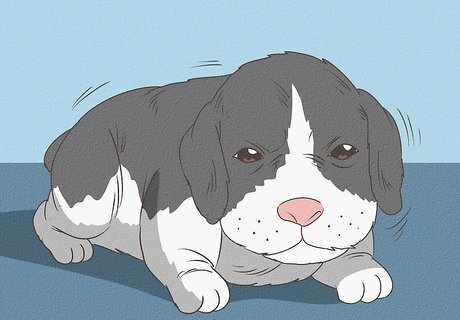
Watch for symptoms of hypoglycemia. Low blood sugar might occur in puppies who are not nursing from their mother. You may notice that the puppies are weak, limp, or cold. They may have bluish gums or twitching muscles. Take affected puppies to the vet to have dextrose administered to them.

Check for dehydration. If the puppy has dry skin or sticky gums in the mouth, they may be dehydrated. You can prevent this by feeding the puppy regularly and providing a humid environment. If the puppy is severely dehydrated, take them to a vet immediately. Loss of skin elasticity is a major sign of dehydration. To check for this, pinch the puppy’s skin. If it sticks and does not return to normal, they may be dehydrated.
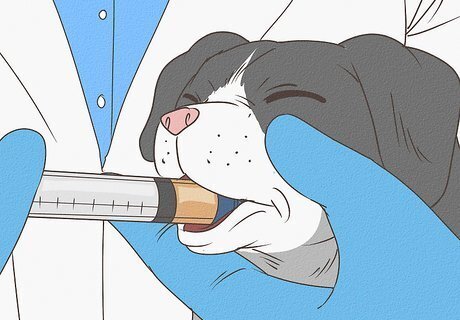
Begin deworming at two weeks of age. It is often recommended that puppies be dewormed for roundworm and hookworm beginning at two weeks. This first round should be followed up with subsequent dewormings at four, six, and eight weeks of age. Your vet will most likely give the puppy a shot that kills any worms living inside the puppy. Oral medication is also sometimes used.
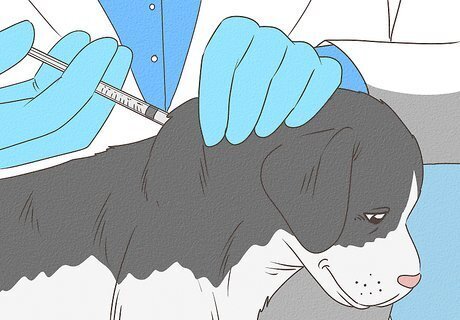
Vaccinate them. Puppies are usually vaccinated for the first time between six and eight weeks of age. Puppies typically receive shots for distemper, parainfluenza, and bordetella at this time. Orphaned puppies may be especially vulnerable to parvo if they did not receive enough colostrum, the early mother's milk that bolsters the immune system. The vet may decide to vaccinate them for parvo at five weeks of age, especially if it is a significant risk in your region.

















Comments
0 comment